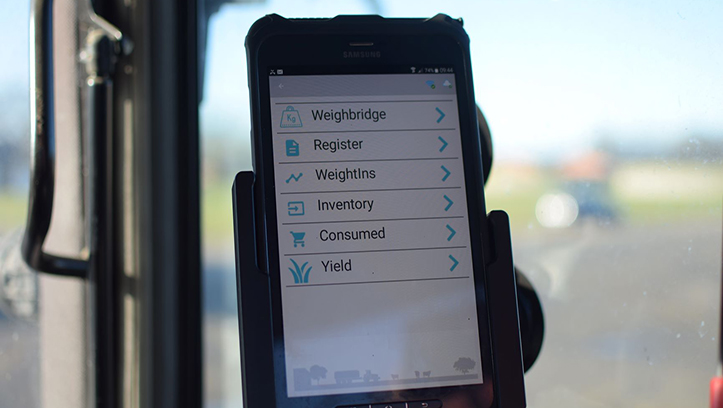The ability to share crucial data across the entire chain is transforming the way producers are feeding their dairy herds, and in doing so is improving cow performance, minimising wastage and therefore helping to reduce farm carbon footprints.
With growing pressure for dairy producers to control feed costs, while meeting increasing environmental responsibilities, Feedlync by CowConnect provides an innovative package for improving efficiencies in weighing and feeding, helping reduce overspend and increasing accuracy.
Feedlync is a cloud-based, digital feed management system allowing producers to keep accurate data and reliable information, allowing for instant adjustment of feed composition and cow numbers.
Working with the weighing system, Feedlync ensures the feed is mixed precisely so that cows get the correct ration every time, helping to save on feed costs and wastage. This precise approach not only supports the best possible health for animals, but also maximises profits.
The hardware package consists of an external weigh system and a gateway unit that fits all mixer wagons and diet feeders of any age or brand, with a tough, waterproof and shock-proof design. Quick and easy to install, new users can be up and running with Feedlync in less than an hour.
“The system is intuitive to operate, and as well as saving you time can offer a return on investment within an average of just 94 days. This is because on average it can increase feed accuracy by 4%, helping you to use less feed to produce a pint of milk,” said Mollie Cresswell, communications manager at AB Agri.
Dairy farmer Colin Murdoch, who has enjoyed gains since introducing the Feedlync feeding system, said: “We’ve improved feed efficiency and accuracy of loading. Without changing anything else we’ve added on 1.4 litres a cow per day, so the system is more than paying for itself.”
Coming in a standard subscription package suitable for any herd size and management preference, the cloud-based system provides accurate data on consumption of feedstocks, the components of the rations and the ability to monitor feed costs.
Operated via the app (iOS and Android) and an online portal, there is no need to sync, or stop to update, the system is live all the time and can be accessed via multiple mobile device logins.
This allows on-farm nutritionists to manage the diets even when not on farm. They can change the rations, add or remove ingredients, manage pens and groups on the go, allowing for great visibility of the cows, as well as a faster and more accurate way to increase milk production and savings on feed.
“Because it is cloud-based, anyone can look at it, from wherever in the world,” said John Allwood of Huntingdon Hall Farm in Cheshire. “It’s all live; you can see what’s going on and the efficiencies that are coming through. If there are mistakes, you can track it instantly.”
Behind the data, the farmer has the full costings. The milk tanker collection automatically goes into the system, the herd management system has the cow numbers going in and the Feedlync system will record what has been fed.
“The farmer can therefore calculate how much it costs to produce a litre of milk every day. From a nutrition perspective, if there is a change in the diet, the user can see what affect that has on the costs,” said Ms Cresswell.
Feedlync integrates seamlessly with external systems on farm and provides automatic import of milk yield and cow numbers. Packed full of features to help save time and farm efficiencies, it can even make dry matter corrections to ensure weather does not impact milk profits, and users will be informed when a silo or feed material reaches a defined low stock level.
“We can link Feedlync to our software management system for our cow numbers to be altered, and the milk qualities to come through,” said Thomas Edwards of Severndale Farm in Chepstow.
“Our feed consultants can also connect to see what is going on with the cows and what they are eating. We can then transfer everything over and get a budget of what we are actually feeding these cows, and how much it is costing us to get our milk,” he said.
Ms Cresswell added: “The dashboard helps you to see and understand the collected data and costs, allowing you to take control and make informed decisions.
“Bringing this data live, makes the farm operation proactive, empowering the farmer in how they manage rations and how to implement changes. The system makes it easy to understand the processes and the effects on productivity and profitability, all from your phone!”


